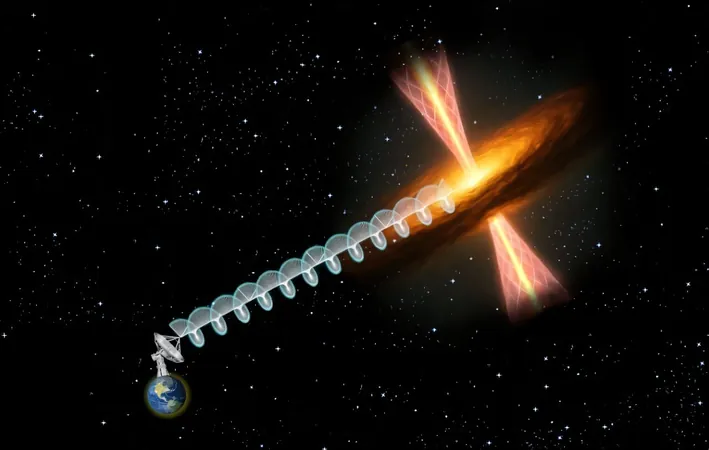
Revolutionary Experiment Upends Quantum Mechanics: A Dive into the Photon Mysteries!
2025-07-08
Author: Charlotte
A Game-Changer in Quantum Physics
A groundbreaking experiment has taken the world of quantum mechanics by storm, challenging the very foundations of our understanding of particles and their behaviors. Researchers at the University of Twente in the Netherlands have measured the quantum tunneling of light pulses between two waveguides, yielding results that clash with some deterministic interpretations of quantum mechanics. This marks a pivotal moment in the long quest to equip the elusive Bohmian theory with empirical tests.
Copenhagen vs. Bohm: A Tale of Two Interpretations
At the heart of quantum mechanics lies the famous Copenhagen interpretation, developed by titans like Heisenberg and Bohr in the 1920s. According to this view, particles exist in a state of probability, only defining their properties upon measurement. Conversely, the Bohmian interpretation, championed by physicists such as David Bohm, posits that particles have defined properties guided by a non-local equation, fundamentally shaping how they navigate the quantum world.
Despite its elegance, Bohmian mechanics is often overshadowed by the Copenhagen approach, primarily due to its conceptual underpinnings. "Although they yield the same predictions, they describe different realities," explains mathematical physicist Sheldon Goldstein.
The Experiment: Testing the Waters of Bohmian Mechanics
In an exciting twist, Klärs and his team designed an experiment that exposes the divergent predictions of these two interpretations. By sending light pulses through two adjacent waveguides, they observed the fascinating phenomenon of quantum tunneling. When introducing a potential step in one of the waveguides—too formidable for photons to tunnel—the researchers noted significant reflections combined with a decaying evanescent field.
By analyzing the energy of the photons within this potential barrier, they discerned their expected velocities, leading to a remarkable conclusion: particles anticipated to possess greater velocity traveled further before tunneling into the second waveguide. "We interpret this as a speed measurement," says Klärs, highlighting a speed that defies predictions made by the guiding equation.
Skepticism and Implications for Quantum Theory
However, not all physicists are convinced by these daring claims. Goldstein expresses doubt about the method’s validity, questioning the reliance on Bohmian constructs to explain outcomes in the context of the experiments. Likewise, Aephraim Steinberg from the University of Toronto urges caution, suggesting that the interpretation of exponential decay could lead to more complex discussions in the scientific community.
A New Chapter in Quantum Mysteries
Despite these concerns, the creativity and ingenuity of Klärs and his team are undeniable. This experiment opens the door to new conversations in quantum mechanics, particularly regarding the elusive question of 'how long does a particle occupy a space?' What seems like a straightforward answer in classical terms reveals layers of complexity in the quantum realm.
As the debate intensifies, this study may herald a new era in understanding the fabric of our universe. Will the Copenhagen interpretation retain its supremacy, or is Bohmian mechanics set for a comeback? Only time, and more experimental results, will tell.









 Brasil (PT)
Brasil (PT)
 Canada (EN)
Canada (EN)
 Chile (ES)
Chile (ES)
 Česko (CS)
Česko (CS)
 대한민국 (KO)
대한민국 (KO)
 España (ES)
España (ES)
 France (FR)
France (FR)
 Hong Kong (EN)
Hong Kong (EN)
 Italia (IT)
Italia (IT)
 日本 (JA)
日本 (JA)
 Magyarország (HU)
Magyarország (HU)
 Norge (NO)
Norge (NO)
 Polska (PL)
Polska (PL)
 Schweiz (DE)
Schweiz (DE)
 Singapore (EN)
Singapore (EN)
 Sverige (SV)
Sverige (SV)
 Suomi (FI)
Suomi (FI)
 Türkiye (TR)
Türkiye (TR)
 الإمارات العربية المتحدة (AR)
الإمارات العربية المتحدة (AR)